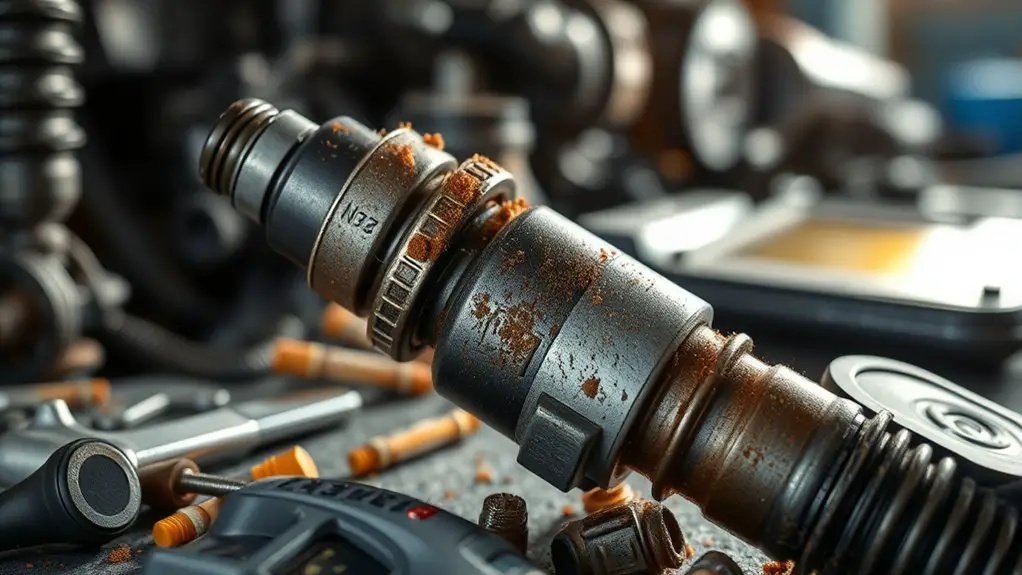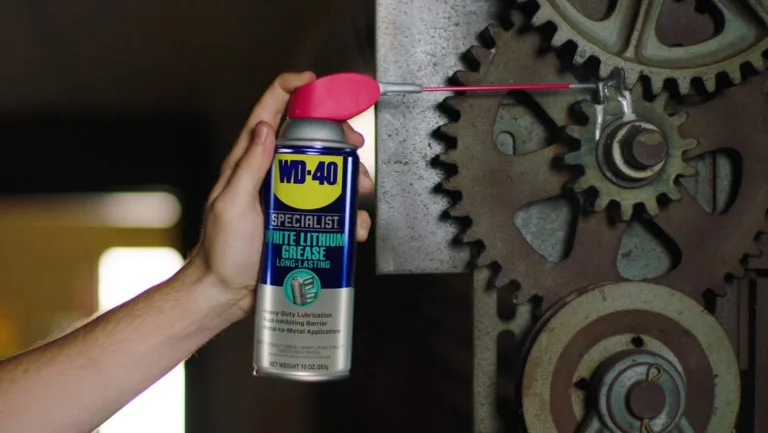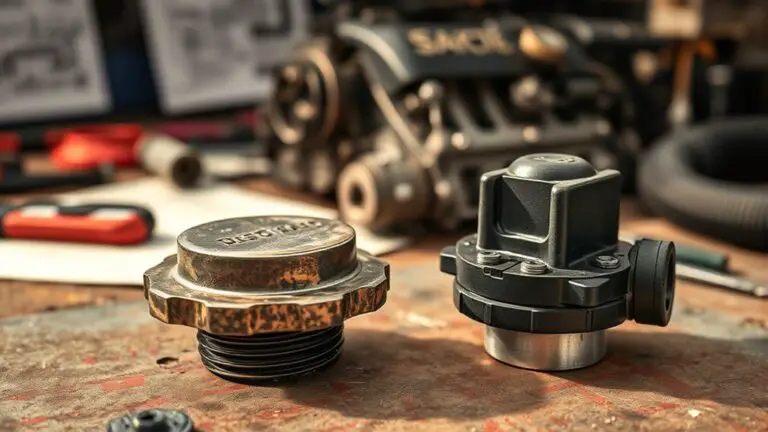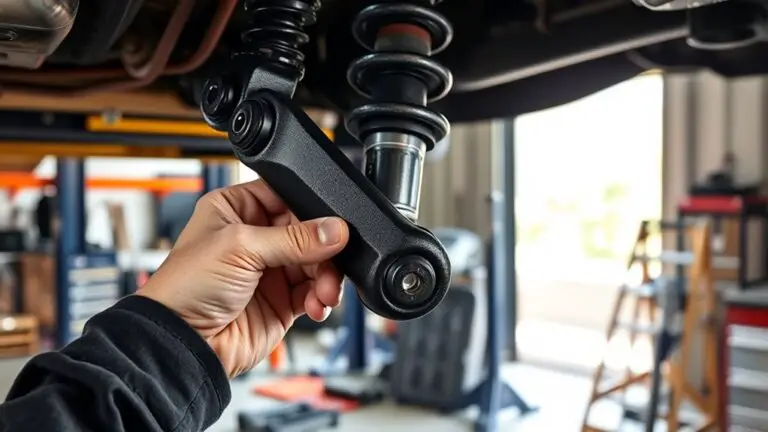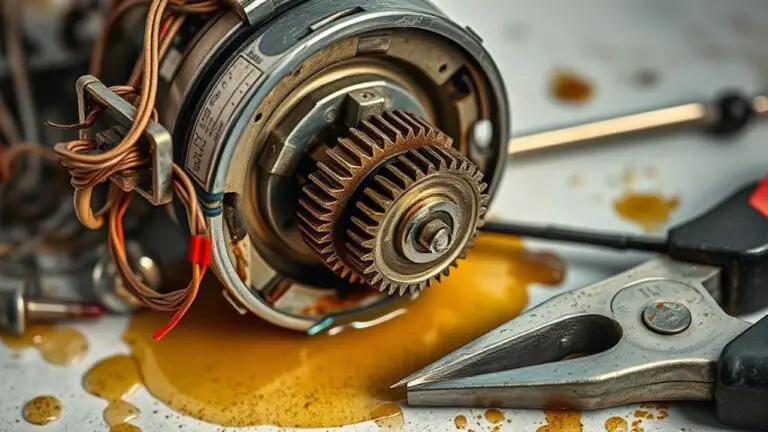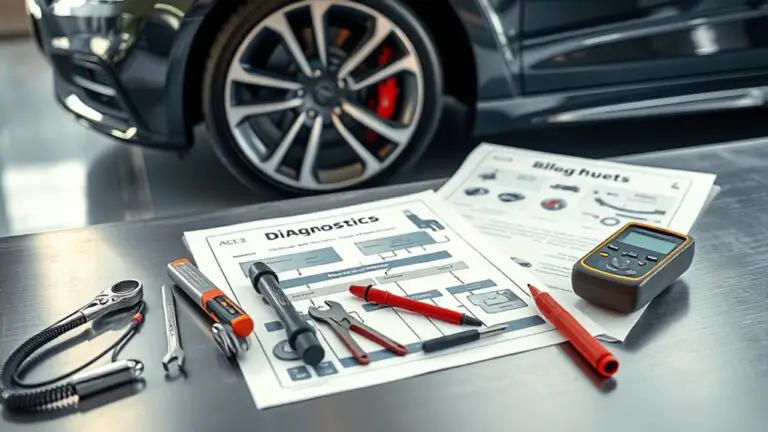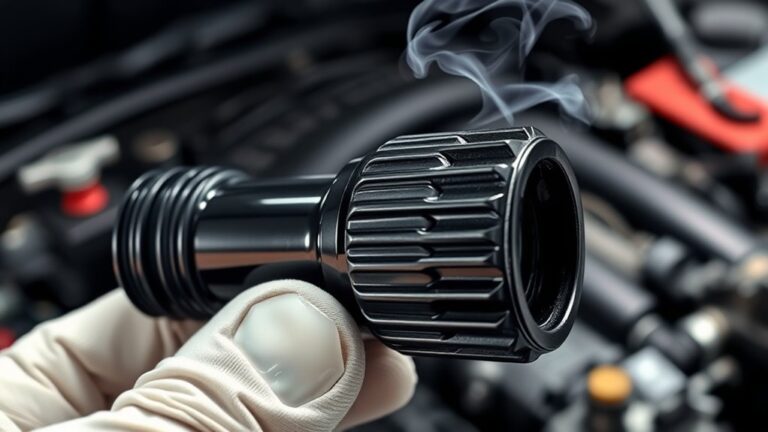How Contaminated Fuel Causes Diesel Injector Problems and Recovery Options
Contaminated diesel introduces water, dirt, and microbes that attack your injectors. Water causes corrosion, bad seals, and mis-spray; phase separation robs lubrication and makes sprays erratic, while frost can block flow. Dirt and sediment clog filters, wear pumps, rails, and injectors, and microbial growth degrades lubricity and forms abrasive biofilms. Recovery options include targeted cleaning or refurbishment of injectors and rails, upgraded filtration, and strict fuel-system maintenance. If you keep going, you’ll uncover practical steps for sustained reliability.
Identifying Contamination in Diesel Fuel
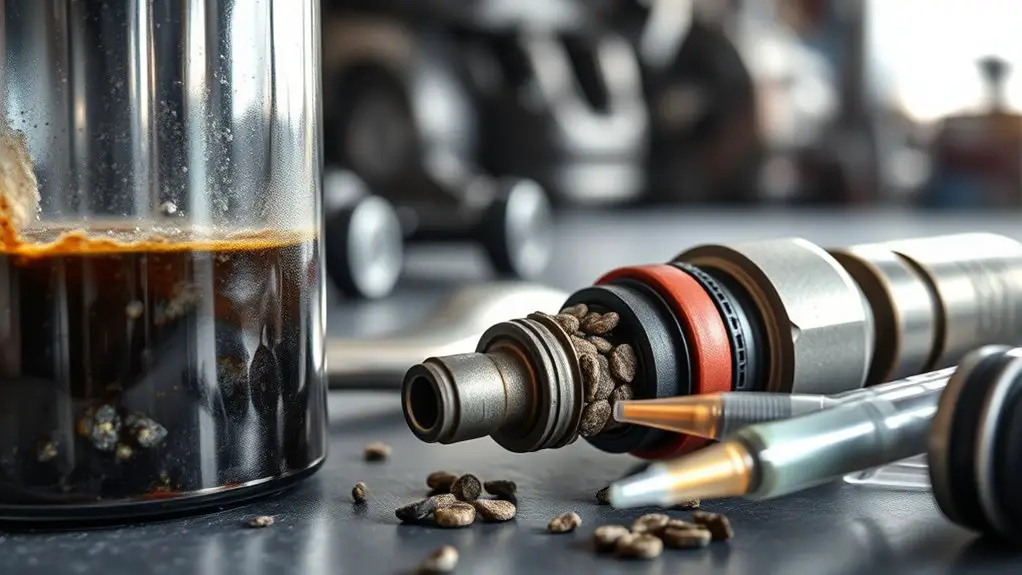
Identifying contamination in diesel fuel requires a methodical approach to spotting telltale signs before they impact performance. You’ll start with a clear diagnostic plan: define suspected contaminants, establish sampling points, and set acceptance criteria. Your focus is on objective evidence you can verify through fuel sampling and contamination testing. Begin by evaluating fuel color, aroma, and sediment presence during sampling, then move to lab or on-site tests for particulates, water content, and microbial activity. Track viscosity and lubricity metrics to flag deviations from specification. Compare contemporary samples to baseline lots to identify trend shifts, and document all findings with timestamped records. Use a systematic checklist to avoid missed indicators, ensuring you don’t confuse temporary anomalies with persistent issues. Prioritize data over assumptions, and maintain an auditable trail for remediation decisions. The goal is a precise, actionable understanding that guides effective filtration, handling changes, and fuel treatment strategies.
How Water in Fuel Harms Injectors
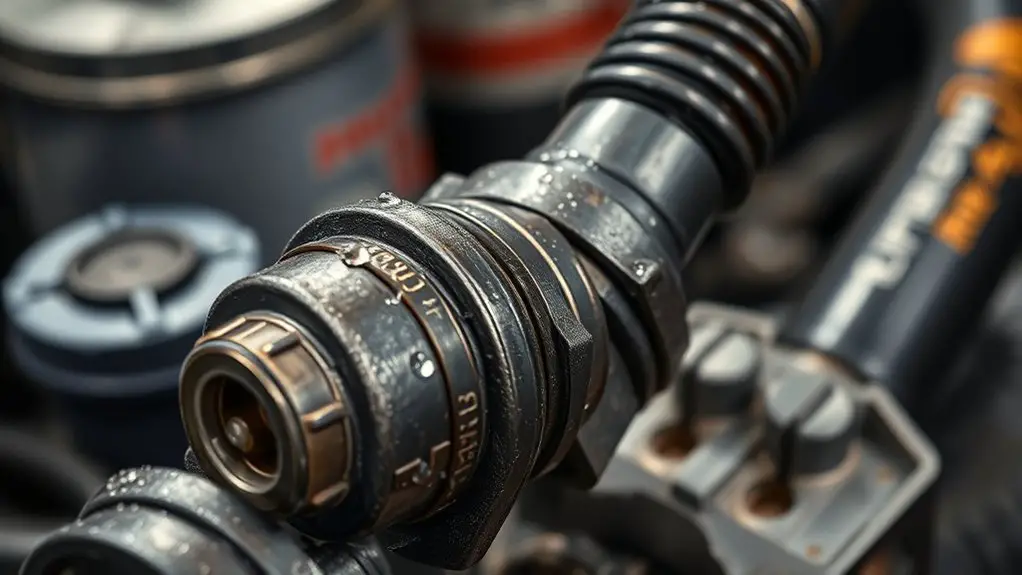
Water in fuel attacks injector performance in several direct ways. You’ll see quicker corrosion, reduced lubrication, and irregular spray patterns as water separates and pockets form inside the system. Water contamination lowers combustion efficiency, promotes rust, and accelerates wear on high-pressure components. You’ll also experience injector sticking or hesitation when gel-like slugs form, forcing more fuel pressure to compensate and increasing heat stress. Over time, injector damage accumulates, undermining precision delivery and leading to uneven power output.
| Trigger | Effect on injectors | Result you notice |
|---|---|---|
| Water contamination | Corrosion, bad seals | Leaks, poor sealing |
| Phase separation | Lubrication loss | Sticking, erratic spray |
| Frost/ice formation | Blocked flow | Misfire, rough idle |
| Rust particles | Abrasion | Premature wear |
The Impact of Dirt and Sediment on Fuel System Components
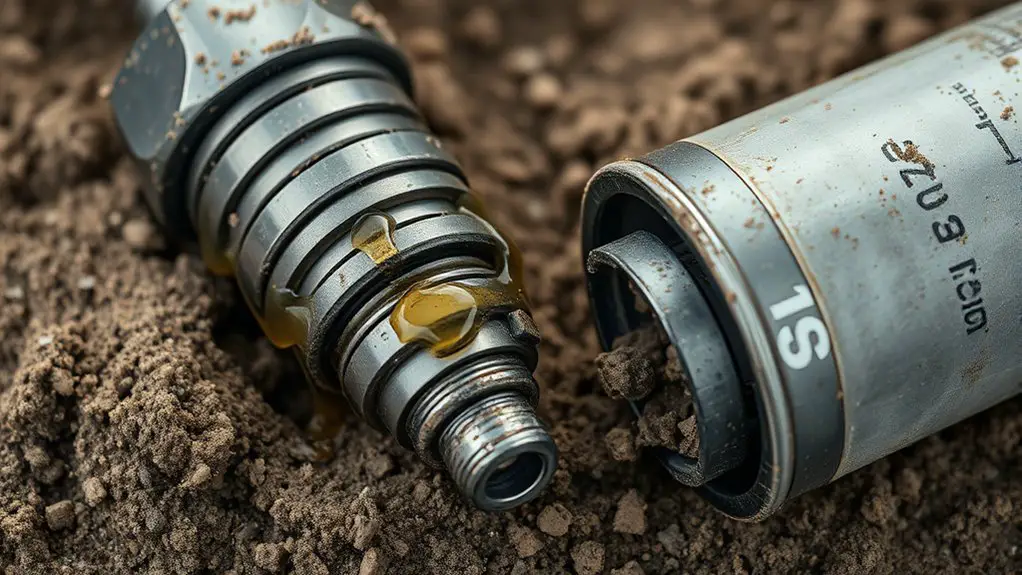
Dirt in fuel pathways and sediment in the system can alter flow patterns, increase filter load, and raise the risk of clogging. As you examine components, you’ll see how particulate matter accumulates, amplifying wear and reducing injector precision. This discussion starts by identifying where dirt and sediment travel, and how each part responds to contaminants.
Dirt in Fuel Pathways
Even small amounts of dirt and sediment in fuel pathways can quietly undermine engine performance, so understanding how these particulates move through filters, rails, and injectors is essential. You’ll analyze pathways as a system, tracing how contamination enters at the pump, bypasses imperfect seals, and encounters fuel filtration stages. Observe how particulates vary in size, shape, and hardness, affecting flow and pressure delivery. Within this framework, think about injector design and its tolerance to debris, since micron-scale material can alter spray patterns, atomization, and spray cone consistency. By mapping flow routes, you expose bottlenecks and potential clog points before failure margins widen. This methodical view supports proactive maintenance, emphasizing clean intake, robust filtration, and informed expectations for performance under real-world operating conditions.
Sediment Impact on Parts
Sediment in the fuel path can silently degrade component performance, so you’ll examine how dirt and particulates affect pumps, filters, rails, and injectors as a connected system. You’ll quantify how grit impacts flow, pressure stability, and endurance, and you’ll link each part’s behavior to overall efficiency through a methodical lens. By focusing on fuel filtration and sediment removal, you’ll map failure modes from entry to combustion, noting tolerance thresholds and maintenance windows.
1) Assess filtration capacity and clog progression across stages, correlating sediment load with pressure drop.
2) Track injector and rail wear patterns under varied contaminant profiles to identify early indicators.
3) Define a lifecycle strategy that emphasizes proactive sediment removal and timely filter replacement for reliability.
Microbial Growth and Its Effects on Lubricity and Blockages
Microbial growth in contaminated fuel can directly undermine lubricity and trigger blockages, as microbes degrade protective additives and alter fuel properties. In steady, analytical terms, you’ll assess how biofilm formation increases friction, raises wear, and shifts lubricity metrics, even before visible clogging occurs. Microbial contamination accelerates fuel degradation, producing acids and deposits that corrode surfaces and change detergency balance. By isolating the causal chain—from contamination to altered rheology to filter loading—you gain predictive control over recovery options. Track microbial activity with simple indicators (color, odor, sediment) and formal tests (CTC,ATP) to quantify risk. In practice, you’ll prioritize fuel polishing, additive rebalancing, and tank hygiene to restore performance. Table below contrasts two paths: proactive monitoring vs reactive containment.
| Pathway | Outcome |
|---|---|
| Proactive monitoring | Lower risk of lubricity loss |
| Reactive containment | Higher breakthrough risk |
Symptoms of Contaminated Fuel Affecting Injectors
You’ll see how different contaminant types interact with injectors, from clogging and wear to altered spray patterns. Early symptoms, such as rough idle, misfire, or decreased power, help pinpoint whether contamination is the culprit. Understanding these signs guides targeted recovery steps and informed prevention to minimize recurring issues.
Contaminant Types Impacting Injectors
Contaminant types in fuel systems manifest distinct symptoms in injectors, and recognizing these patterns helps pinpoint root causes. You’re evaluating how each contaminant disrupts flow, atomization, and timing, so you can choose effective recovery options. Focus on how contaminants interact with pumps, filters, and injectors, and how fuel additives and filtration systems influence outcomes. By mapping symptoms to specific contaminants, you gain clarity without speculation. Your approach remains analytical, measured, and practical, prioritizing actionable steps over theory.
- Water and microbial growth causing hesitation, rough idle, and incomplete combustion.
- Sediment and rust particles causing clogging, uneven spray, and misfires.
- Volatile compounds from degraded fuel leading to vaporization, starting issues, and reduced spray efficiency.
Symptoms of Contamination
Contaminants affect injectors by altering fuel properties and flow, which manifests as measurable symptoms you can trace back to specific issues in pumps, filters, or the injector train. You’ll notice rough idling, misfires, reduced power, and elevated exhaust temps as signs of contamination. Injector spray patterns may become uneven, increasing fuel trim variability and causing stuttering under load. You might also see increased fuel consumption, harder starts, or white smoke during cold operation. Evaluating symptoms methodically helps you distinguish between dirty filters, clogged injectors, or degraded fuel quality. Consider fuel additives to stabilize the blend and support cleansing actions, and plan injector cleaning when performance dips persist.
| Symptom / Indicator | Likely Cause |
|---|---|
| Rough idle | Dirty injectors / contaminated fuel |
| Misfire under load | Coking, poor spray |
| Hard starting | Fuel quality drop |
| Increased fuel use | Inefficient spray |
| Uneven spray pattern | Injector clog |
Recovery and Prevention Steps
To recover from contaminated fuel affecting injectors, start with a systematic diagnostic sequence: confirm fuel quality, inspect filters and water separators, and test fuel pressure and flow to identify whether the issue stems from dirty filtration, clogged injectors, or degraded fuel.
- Check fuel filtration and water separator condition, replacing interfaces as needed.
- Perform precise injector maintenance: listen for abnormal spray patterns, verify balance, and test rail pressure.
- Verify fuel quality through lab or on-vehicle tests, isolate contaminated segments, and document recovery steps.
This approach clarifies fault origins, guides targeted cleanup, and prevents recurrence. Maintain a disciplined record, replace compromised components, and re-test to guarantee consistent performance. Adopting these steps supports fuel economy, reliable starts, and freedom to drive with confidence.
Recovery Options: Cleaning, Upgrades, and Refurbishment
When addressing recovery options for contaminated fuel and diesel injector issues, the focus should be on a structured sequence: diagnose the problem, select appropriate cleaning methods, and implement upgrades or refurbishment as needed. You approach this with a methodical mindset, separating symptoms from root cause to avoid repeat failures. Begin with precise cleaning: choose cleaning agents and procedures that target your contamination type, and verify compatibility with your injector design. Next, implement fuel filtration improvements to capture future contaminants, reducing recurrence risk. For stubborn deposits, consider controlled refurbishment of fuel rails, injectors, and associated seals, using professional equipment to restore tolerances and spray patterns. If performance remains limited, evaluate injector upgrades tailored to your engine’s requirements, balancing cost and benefit. Document results and monitor fuel quality going forward. The goal is sustained reliability, not quick fixes, so align choices with long-term freedom from recurring contamination and injector distress.
Preventive Maintenance to Keep Fuel Clean and Injectors Safe
Preventive maintenance is your first line of defense against fuel contamination and injector distress, so start with a clear plan that targets both ongoing cleanliness and component safety. You’ll reduce risk by formalizing steps that keep fuel filtration effective and injectors protected. A disciplined approach aligns with engine performance goals and personal freedom to operate reliably.
1) Establish maintenance schedules that match your use pattern, fuel type, and environment, and document every service.
2) Implement redundant filtration stages where feasible, monitor filter differential pressure, and replace filters before restriction impacts fuel rail pressure.
3) Schedule fuel system diagnostics alongside routine service, verifying pump flow, injector spray patterns, and reservoir cleanliness to catch contamination early.
This methodical routine emphasizes proactive checks over reactive fixes, ensuring cleaner fuel, steadier combustion, and longer component life. You’ll gain confidence knowing your system is protected by deliberate maintenance, not optimistic assumptions. fuel filtration, maintenance schedules.
Frequently Asked Questions
Can Contaminated Fuel Cause Injector Timing Issues?
Yes, contaminated fuel can affect injector timing. You might think timing isn’t a factor, but particulate matter or water can disrupt injector performance, causing stray spray patterns and delayed or early timing. You’ll want precise fuel filtration to minimize these risks. Analyze logs, test rail pressure, and monitor injector performance closely. Don’t overlook stale fuel or poor filtration; addressing these guarantees consistent timing and smoother operation, aligning with your freedom to trust your engine.
How Long Does Cleaning Take After Fuel Contamination?
Cleaning after fuel contamination typically takes anywhere from a few hours to a full day, depending on severity and system access. You’ll want to run a diagnostic, perform injector maintenance, and flush the fuel lines thoroughly. You’ll monitor flow, pressure, and injector spray patterns to guarantee no debris remains. In short, expect a methodical process that may stretch into a day, but you’ll restore performance through careful fuel system cleaning and injector maintenance.
Are Aftermarket Additives Effective Against Injector Damage?
Are aftermarket additives effective against injector damage? Generally, some additives can offer marginal injector protection by lubricating pump components and stabilizing fuels, but they aren’t a guaranteed fix. Their additive effectiveness varies with fuel quality, contamination level, and injector design. You’ll want to assess formulations backed by testing, not hype. Rely on a clean fuel source first, then consider additives as a supplementary measure for injector protection, not a substitute for professional diagnosis.
What Costs Are Typical for Injector Refurbishment?
Injector refurbishment typically runs between $300 and $900 per fuel injector, depending on make, labor, and whether you opt for core exchange. If you need complete injector replacement, costs can climb to $1,500–$3,000 per pair. Refurbishment benefits include restored spray patterns, reduced emissions, and smoother idle, saving long-term fuel economy. You’ll want a transparent estimate, compare shops, and weigh the downtime against reliability gains as you pursue a freer, longer-lasting drive.
How Can I Test Fuel Quality Before Filling?
Yes, you can test fuel quality before filling. Start with a visual check for water, sediment, and color; use a clear sample to spot turbidity. Implement fuel filtration before every fill, and run a simple test kit for common contaminants (water, phase separation). Track results over time to identify trends, then adjust sourcing. Maintain rigorous quality testing protocols to protect injectors and fuel systems, keeping you in control and free to move forward.

